Wileyfox Swift and Storm review: Two cheap UK phones, one worth buying
The entry-level Swift is great value for money, but the higher-end Storm just doesn't cut the mustard.

There are two ways you can go about buying a new smartphone: Either you spread the cost over a year or two with a carrier contract, or purchase the thing outright. When you're finally done paying it off, a subsidised handset often ends up costing more than it's worth. However, considering the price of new iPhones, Samsung flagships and peers, that can still be preferable to emptying your bank account in one fell swoop. Thankfully, companies big and small are addressing this conundrum with phones that offer the kind of specs and user experience customers want at prices they're happy to pay upfront. Despite an abundance of competition in contract-free handsets already, new British brand Wileyfox is one such company, and it's hoping to make its mark in the UK with the affordable £129 Swift and higher-end £199 Storm.
Wileyfox's origins

Wileyfox seemingly came out of nowhere, announcing itself as a company before launching two Android smartphones in as many months. No delays, no crowdfunding-esque pre-order system, no invites. This has led to some speculation, from us and readers alike, as to whether Wileyfox is as fresh-faced as it makes out. You don't see a new British smartphone manufacturer every day, after all, especially one with a polished website and devices ready to ship practically right off the bat. Naturally, the company has attracted the attention of the press, and suspicions that Wileyfox is simply an established firm drumming up interest in new products by summoning a new, "disruptive" UK company to front them isn't entirely unfounded.
The skepticism is understandable, too. Huawei went some way to masking its ownership of the Honor smartphone brand when it debuted in the UK, and the relationship between Oppo and OnePlus is still not entirely clear. While Wileyfox doesn't appear be just a cloak-and-dagger marketing exercise, it's not exactly a lone wolf either. The company is owned by Meridian Group, which is also the parent of handset makers Fly Mobile and Kazam. Now, it's unlikely you'll have heard of Fly, since it only sells phones in Eastern and Southern Europe, the CIS and India. On the other hand, the name Kazam might ring a bell (perhaps for the wrong reasons). Kazam peddles its SIM-free phones in Western Europe, including its home country of the UK.
A spokesperson for Wileyfox told me there's "no formal relationship" between the companies apart from all being under the same umbrella corporation. They have "entirely different philosophies and leadership teams," and although its handsets are manufactured in China, Wileyfox is very much a British company run from the UK. So no, Wileyfox isn't an independent startup, but from what I've been led to believe is a new, separate company that happens to be backed by an organisation with substantial experience in the smartphone game. Make of that what you will.
Hardware

Since the smartphone era began many, many moons ago, pretty much every imaginable variation of the slate form factor has come to pass. While your typical flagships costing more than a week's wages blend metal and glass in various, visually appealing ways, more affordable phones can often be boringly generic. You only have to look at the latest, own-brand offerings from Vodafone and EE, for example, to see how easy it is for cheaper handsets to lack distinctive qualities.
The £129 Wileyfox Swift doesn't raise the bar for low-cost smartphone design, per se. It is nice and neat for a 5-inch device, though: not too thick, not too wide, not too tall, not too heavy, or light (there's a Goldilocks reference in there somewhere). With a slight curve in its back, soft corners and a tacky, grainy texture to the dark grey rear cover, it sits more than comfortably in the palm. And due to its tidy dimensions, it's easy to use one-handed.
The Swift is still a little on the ordinary, boxy side, but the devil's in the details. The quirky, circular earpiece is something I've never seen before, for example. Then there's the angular, black Wileyfox logo, the company name stamped on the back in vivid orange, the big and bold metal rim around the primary camera with its own orange accent, the matt rear panel -- all come together to give the Swift a distinct, individual charm. And it's well built, to boot, despite being a mostly plastic affair. The chassis itself is solid, and the back plate that hides the dual micro-SIM slots, microSD card slot and removable battery fits like a glove. I do have one particular bone to pick with the construction, however. The micro-USB port on the bottom of the device is sunken too far into the body, so much so that any cable I cram into it pops out at the slightest movement.

Wileyfox's Storm may only be £70 more expensive than the Swift at £199, but the higher-end handset has all the looks of a "premium" smartphone. Being a larger, squarer and more imposing device than the Swift has something to do with it, but it's also far more dynamic in shape. The top and bottom edges pillow out ever so slightly, for instance, and all four edges fade away from the larger glass front to meet the smaller back plate. Its design has a whiff of OnePlus about it, but it's an attractive handset in its own right rather than being a carbon copy.
The bright orange Wileyfox stamp and black logo are this time joined by an oblong-shaped metal surround with bronze edging that highlights both the primary camera and its companion flash (the front-facing camera has its own flash, too). And the dark grey back plate has the same matt, almost sandy texture to it that affords you extra grip and feels that bit more luxurious than plain plastic would. Unlike the Swift, the Storm features capacitive keys that sit under the 5.5-inch display. With that much space available to an on-screen navigation bar, they are almost unnecessary, but they do give purpose to what would otherwise be a dead bezel. The home button doubles as a multicolour notification light, too, which is a cool feature Wileyfox has snuck in there. (The Swift makes do with a separate, multicolour LED on its face instead.)

Despite being a little large for my liking, the Storm's thin, chamfered edges, agreeable 155g weight and velvety back plate make for a cozy grip, even if using the device one-handed is a bit of a struggle. The Storm doesn't use a different class of build materials to the Swift. Sure, the volume rocker and power key are brushed metal on the pricier handset, but the outer edge is a hard, matt plastic though it looks like it could also be of metal at first glance. In terms of build quality, the Storm is absolutely rock solid. There's no removable back panel this time around -- the dual micro-SIM slots are tucked away in a drawer, with one doubling as a microSD card tray -- so the Storm is one complete block of plastic and glass.
Whereas the Swift manages to fit a lot of personality into what's otherwise a fairly standard design, the Storm's character is defined by its more angular, aggressive and attractive shape. Simply put, it looks and feels great. For a device at this price point, I dare say it punches well about its weight.
Storm | Swift | |
|---|---|---|
Dimensions | 155.6 x 77.3 x 9.2mm | 141.2 x 71 x 9.4mm |
Weight | 155g | 135g |
Display | 5.5-inch IPS LCD (1,920 x 1,080) | 5-inch IPS LCD (1,280 x 720) |
Pixel Density | 400 ppi | 294 ppi |
Glass | Toughened | Gorilla Glass 3 |
Processor | 1.5GHz octa-core Snapdragon 615 | 1.2GHz quad-core Snapdragon 410 |
RAM | 3GB | 2GB |
Storage | 32GB (expandable) | 16GB (expandable) |
Primary camera | 20.7-megapixel BSI | 13-megapixel BSI |
Secondary camera | 8-megapixel | 5-megapixel |
Battery | 2,500mAh | 2,500mAh (removable) |
OS | Cyanogen OS 12.1 | Cyanogen OS 12.1 |
Cellular | Cat 4 LTE | Cat 4 LTE |
WiFi | 802.11b/g/n | 802.11b/g/n |
Bluetooth | 4.0 | 4.0 |
NFC | No | No |
Display

Both of Wileyfox's handsets are kitted out with IPS LCD displays, but there are some significant differences between them. And I'm not just talking about their sizes and resolutions. The Swift sports a 5-inch, 1,280 x 720 panel shielded by Gorilla Glass 3, while the larger Storm tucks a 5.5-inch, 1080p screen away behind toughened glass -- nothing out of the ordinary for phones at their respective price points. While the Swift's display is perfectly punchy and colour rich, the Storm's has noticeably better contrast. By that I mean colours are that bit more vibrant, and blacks a shade deeper. It's like the difference between a perfect photo and one that's ever-so-slightly overexposed.
I can't say, however, that the Storm's panel is better across the board. The Swift's display has a lot more power available to it, making it much easier to see in direct sunlight. Readability isn't a major issue for the Storm; you can still crank the brightness up to a point where it's perfectly usable on a sunny day, but glare is nevertheless a distraction. To quantify it loosely, the maximum brightness setting on the Storm is equivalent to roughly 50 percent brightness on the Swift, so I know which I'd rather take to the park for a picnic. Another disparity between the displays is that in direct sunlight, you can see the glint of the touchscreen digitizer on the Storm, which is completely hidden on the Swift. Viewing angles are consistent across both devices: more than adequate, but nothing special.

Both of Wileyfox's smartphones have an auto-brightness setting, as you'd expect, and a feature called "LiveDisplay," which alters colour temperature based on the time of day. As you get into the evening, the screen adopts a red tinge, reducing your exposure to the blue end of the spectrum that's proven to mess with sleepiness. Within the LiveDisplay menu, you can also tweak the "Day" and "Night" temperatures if you wish, but default white balance across both devices is good enough that I dare not venture down this rabbit hole. Also available on the Swift are a few settings you won't find on the Storm, like the ability to play with pixel density at the software level -- it's 320 ppi by default even though the 720p display is 294 ppi by design -- and limit what orientations the auto-rotation feature responds to.
Software

Wileyfox has opted for Cyanogen OS, an open-source, customised version of Android, to run the show on both of its devices. Version 12.1, to be exact, which uses Android 5.1.1 Lollipop as its backbone. For the most part, it offers the familiar stock Android experience, just with a bunch of extra features tacked on (like LiveDisplay). A minor and welcome alteration to the vanilla Android layout is the app drawer, which sticks all your apps on one vertical pane and groups them alphabetically. If you're feeling particularly lazy, there's a slider at the bottom of this screen that lets you jump straight to a letter in much the same way you would quick-scroll through your contacts list.
Personalisation is a big part of Cyanogen OS, which includes a "Themes" app for just that purpose. It's part settings menu, part storefront, offering a large variety of both paid and free skins that can change every facet of the aesthetic. Fonts, icons, wallpapers, ringtones, status icons, settings toggles; even the navigation bar and boot animation. And if you like certain elements of different themes and not others, you can mix and match individual components to your heart's content. I've stuck with the preinstalled Wileyfox theme, which is a relatively light skin that uses the company's signature orange wherever it can and its logo for the app drawer button, among a few other minor tweaks.
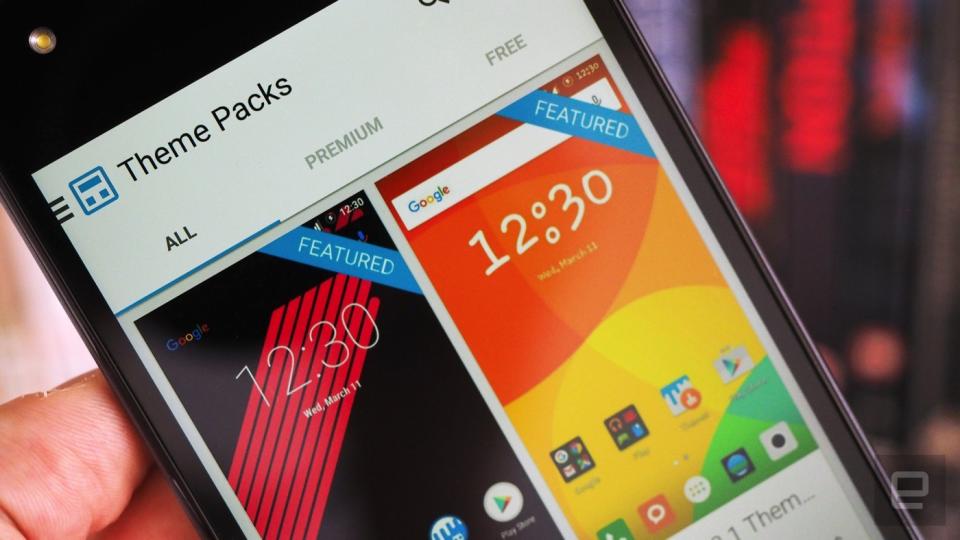
Putting your own twist on things doesn't begin and end with the "Themes" app, though. On both phones, you can set a different notification colour for every single app if you want. That's as deep as personalisation gets on the Storm, but you can tinker with the Swift to a much greater extent. You can tweak the layout of the navigation bar, for example, or add, remove and reorientate what appears in the quick-settings menu. If you have the patience to explore every possibility scattered about the settings menu, there's a bunch of different ways to make the lower-end phone your own.
Enhanced security is another area Cyanogen OS prides itself on. The "PIN Scramble" feature randomises the layout of the numbers on the PIN entry screen to flummox shoulder-surfers and smudge-guessers. You can also pattern-protect folders on the homescreen carousel, which in turns hides any locked software in the app drawer. Privacy Guard, buried within the settings menu, is by far the most robust security measure in Cyanogen OS. Using this tool, you can manage individual app permissions and block any unwanted activity.

Should you wish to distance yourself from Google's services -- all of which are preinstalled on both Wileyfox devices -- Cyanogen OS ships with alternatives for a few of the core apps. These include a calendar and email client (both built by Boxer), as well as the Cyanogen browser, which is sold as being fast and secure. To me, it looks like an old version of Chrome, and doesn't appear to perform any better than Google's browser. An optional addition I find pretty useful is Truecaller, which will integrate its features into the stock dialer if you so choose. It's basically a caller ID service that can also warn you if an incoming call is likely to be vocal spam. It doesn't work 100 percent of the time, but I've had a couple of calls from unsaved numbers that popped up with the name of familiar PR agencies attached, which has proved handy.
Cyanogen OS also includes its own gallery app that can pull images from Google+, Flickr, Facebook and Dropbox for easy, one-stop hoarding. Last up: AudioFX, an app that lets you play around with audio output. It features a number of preset profiles for different types of music, though you can create custom ones too. It works wonderfully with Spotify, and you can also use it to boost bass levels if, say, your headphones are lacking a certain oomph.
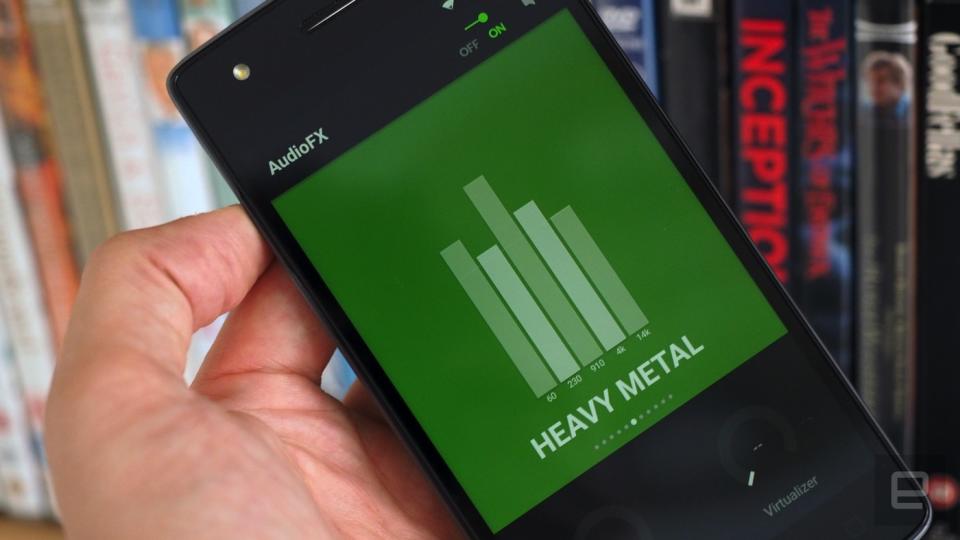
All things considered, Cyanogen OS is a good example of Android customisation done well. It won't alienate vanilla diehards, and includes just enough useful, extra features without feeling bloated. That said, there's an issue with the build on the Swift that genuinely annoys me. A Google Now widget lives at the top of the homescreen panel, and you can't get rid of it. And if you don't really care for Google Now, you have to look at a grey bar that permanently displays "Get Now cards." For whatever reason -- or thankfully, I should say -- this doesn't appear on the Storm.
Camera
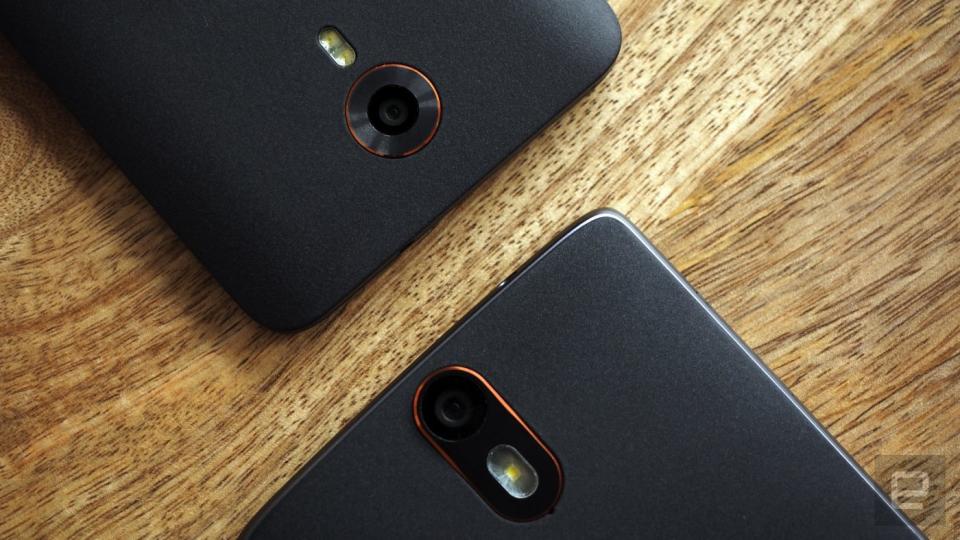
The stock camera app in Cyanogen OS is the complete opposite of the one bundled with vanilla Android. Whereas Google's offers practically no adjustable settings, everything you can possible think to tweak is, well, tweakable in the default app on Wileyfox's handsets. And I'm not just talking about exposure compensation, white balance and ISO. There are upwards of 20 different scene and filter modes available, alongside manipulations of shutter lag, focus speed, exposure weighting and more. I'm of the firm belief that simpler is better when it comes to smartphone camera apps. I want to be able to pull out my phone and capture a shot, not agonise over settings and scene modes. To this end, I took the majority of my camera samples on full auto or in HDR mode, though in some instances I absolutely had to adjust exposure compensation manually (more on this later).
The Storm is equipped with a 20.7-megapixel primary camera (BSI sensor courtesy of Sony) and an 8MP front-facer. The selfie cam has its own dedicated flash, too, and although I'm not much of a portrait poser, I can see why it would be useful on, say, a night out with friends in a dimly lit bar. Now, in the permanently overcast British autumn, I'll admit I haven't had the opportunity to test either handset's main camera in optimal conditions, but put bluntly, the Storm's imaging chops are plain disappointing.
Where do I start? Well, whether you manually select a focal point on the viewfinder, or leave it up to the Storm to decide, it fidgets constantly. Focus often begins to drift as soon as it's settled on a target, and sometimes it can give up the search altogether and just hang in a blurry no-man's land. It's legitimately frustrating to use, and I find myself stabbing at the screen trying to capture a shot in the second or so while the going's good. One redemption is the tight macro focal range: The camera has a relatively wide aperture, so you can squeeze out the odd close-up with a pleasing amount of background bokeh.
Another issue with the Storm's camera is chronic underexposure, at least where landscapes are concerned -- this is where manual compensation comes in handy. When your subject is at middle-to-close range, however, the autoexposure setting seems to get a grip on the scene and adjust accordingly. To be fair, underexposed images do look a tad lighter on a computer screen compared with the Storm's viewfinder, but that's not particularly helpful when you're framing a shot. When left on auto, white balance is approaching accurate most of the time, even when artificial sources are at play.

When you're not wrestling with skittish focus and exposure, you can get a crisp 20-megapixel image out of the Storm with very true-to-life colour saturation. However, low-light performance is another area in which the primary camera is a letdown. Obviously, the shutter speed decreases significantly as the sensor tries to gather more light, but when paired with the focus issue, it means it's even harder to take a snap that isn't at least a little blurry. (Otherwise, shutter speeds are nigh on instant, and this is true for both handsets). Beyond that, though, most low-light pictures come out incredibly noisy; grainy to the point of ugly and unsharable.
Low-light video performance simply isn't worth discussing, and because manual exposure adjustments don't carry over from stills to clips, daytime (albeit overcast) videos shot in 1080p don't come out great either. They are too dark by default, the autofocus and exposure compensation mechanisms are all over the place, and audio quality is tinny and distant. I don't know whether it's the fault of the camera module itself, or just poor calibration/optimisation, but don't let that big megapixel count fool you: The Storm's camera is far from capable, and wildly inconsistent.

The lower-end Swift makes do with a 13-megapixel primary affair (BSI sensor courtesy of Samsung) and a 5MP camera up front. The Swift's main shooter doesn't have the better sensor of the two Wileyfox devices on paper, but then it isn't plagued with the same issues I encountered on the Storm. Focusing is fast and holds strong, whether you're shooting a landscape or a rosebud (it's not infallible, of course), and the autoexposure setting is way more accurate in all the situations the Storm struggles. Automatic white balance is generally comparable across both devices, which is to say that it's good on the Swift, but not always perfect.
Like the Storm at its best, images the Swift spits out have, for the most part, realistic colour saturation. The Swift's aperture isn't quite as wide as the Storm's, but a small amount of bokeh is still achievable if the subject of your snap is up close and personal. Thanks to its more precise autofocus and exposure capabilities, daytime video performance is significantly better on the Swift than the Storm. Audio quality is slightly crisper too, but only marginally so; it still lacks a great deal of depth. Low-light clips are basically just as useless as the ones you get from the higher-end model. They come out a shade brighter, but at about 10 fps.
Low-light stills aren't exactly the Swift's strong suit, either. The photos you can tease out of it in awkward conditions aren't nearly as noisy as those from the Storm's camera. But, the Storm's larger 20-megapixel sensor is able to suck up enough light that you can just make out a scene where the Swift only sees a sea of black. The HDR mode on both Wileyfox devices does exactly what it should, enhancing image contrast and giving colours a slightly unrealistic vibrancy, though they do take a good few seconds to process. The panorama mode, too, takes a while to turn photos around, but it stitches scenes together remarkably well.

Overall, I have to say I much prefer the Swift's camera to the Storm's. Imaging performance on the Swift isn't impeccable by any stretch of the imagination -- it's ease of use I'm siding with here. You can pull the device out of your pocket, jump into the camera app and take a picture, knowing that all the auto settings will serve you adequately enough. Between jittery focus and confused autoexposure, the same can't be said for the Storm.
Performance and battery life

Break open the Wileyfox Storm, and you'll find a 1.5GHz octa-core Snapdragon 615 processor, 3GB of RAM and 32 gigs of internal storage (expandable with microSD cards as large as 128GB). The Swift, being the lower-end model, has slightly leaner core specs. It's powered by a 1.2GHz quad-core Snapdragon 410, paired with two gigs of RAM and 16GB of built-in storage (it, too, has a microSD slot, which supports cards up to 32GB). Though one obviously has a bigger engine humming away inside, there really isn't much that separates the two handsets in terms of everyday performance.
I'm now at the stage where I feel I'm forever covering the same ground when it comes to either writing, or simply thinking about the performance of Android devices whenever I've got my paws on one (or two). That's to say the speed and fluidity of the user experience is as fast and as slick as you'd ever need it to be. Take the Storm, for instance. You can whip through the homescreen carousel, yank down the notification bar, and jump in and out of your everyday apps at lightning speed without forcing so much as a hiccup or a stutter out of the device. Chrome pulls websites from the ether to your display in a second or two (depending on your connection, of course), and really, what more do you need?
It's a simple fact: The Swift's working with less horsepower under the hood. But when compared with the Storm, that fact is of little significance. Everything I said about the Storm applies to the Swift, too. No, it's not as fast, but the difference in app loading times and general responsiveness can be measured in the milliseconds. Most importantly, the user experience is consistent, not fluid one minute and sluggish the next. I have, however, encountered the odd gremlin during my time with both the Storm and the Swift: an app crashing for seemingly no reason, or an unregistered swipe across the touchscreen. Mind you, these events are so infrequent that it doesn't dent my opinion that both devices offer commendable performance. And, whether it's a MacBook, a Kindle or a Now TV box, I find every piece of hardware is capable of having a ghost in the machine from time to time.
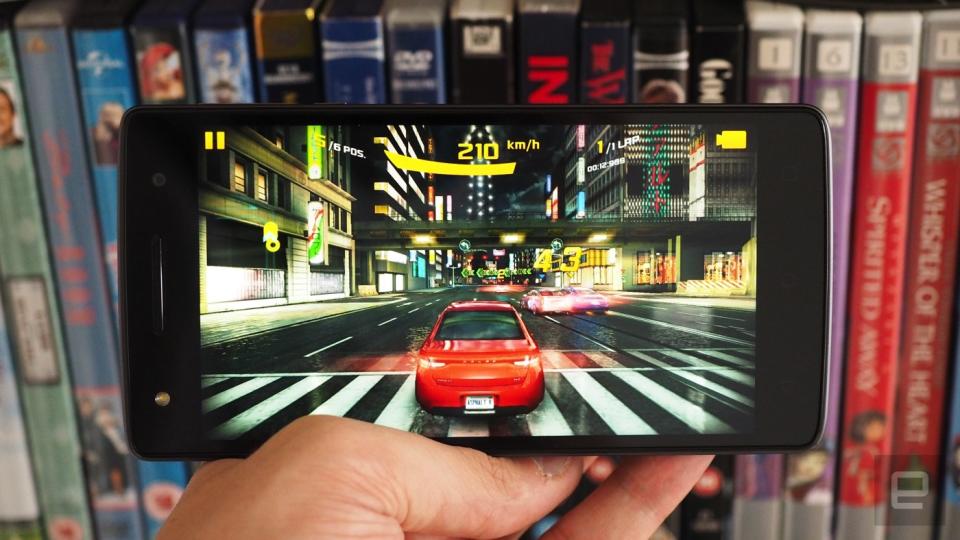
To push the Storm and Swift's silicon to its limits, of course I've indulged in a brief gaming session here and there. Results are as expected. Online shooter Shadowgun: Deadzone looks as good as I've seen it, and runs smoothly on the Storm at the "ultra high" graphics setting. The Swift holds its own on ultra high, too, albeit at a slightly lower framerate. As with all these gaming tests, you have to take into account the 1080p and 720p screen resolutions of the Storm and Swift, respectively; the higher the resolution, the more demanding the workload.
One too many races in Asphalt 8: Airborne confirms the 3D racer isn't able to push either handset to its breaking point. The medium graphics setting ensures the best balance between visuals and performance on the Storm and Swift alike. Bump that up to high, however, and you're only looking at a minor decline in framerate on both devices, with the game remaining perfectly playable (the more detailed textures sometimes looked glitchy on the Swift, though it didn't affect performance). Real Racing 3, a less arcadey driving game, runs extremely well on the Swift, but isn't any fun to play on the Storm due to a low framerate.
EA's racer automatically selects what it believes is an appropriate graphics setting for your device, and you can't change this in-game. Therefore, the Storm has obviously been issued a setting one notch up from what it can handle. Regardless of this minor speed bump, the main takeaway is both phones don't just handle lightweight apps and tasks with ease. If you're partial to resource-hungry games, either Wileyfox device is highly likely of being capable enough to fit your needs.
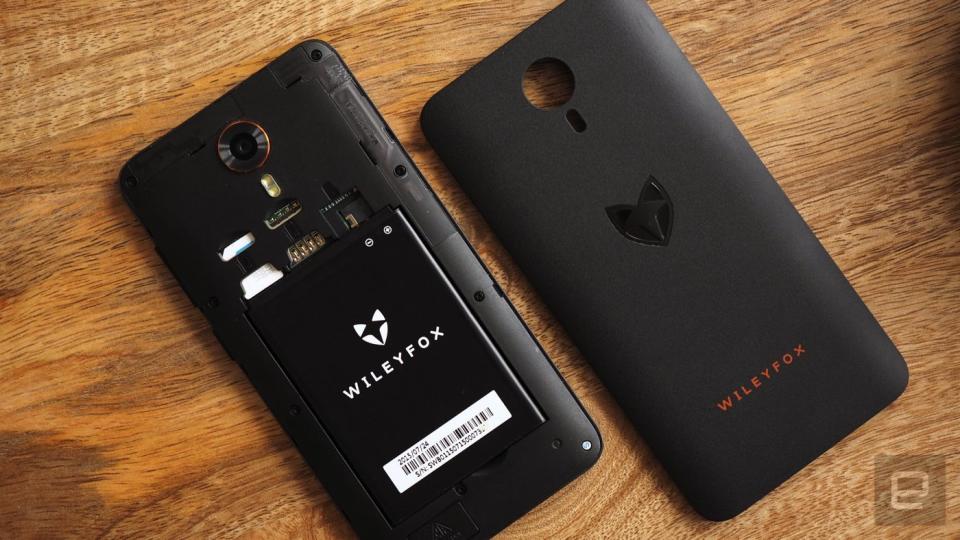
Neither Wileyfox handset has an NFC chip, which isn't ideal if you're hoping to take advantage of Android Pay when it eventually arrives in the UK (or any of the exclusive mobile payment apps available now). You do, however, get the basics: GPS, Bluetooth 4.0, Cat 4 LTE and 2.4GHz WiFi 802.11 b/g/n. A dual-band WiFi chip would've been appreciated, but I guess it's not essential, and both devices maintain solid wireless connections at admiral distances (from my home router at least). GPS performance is fast and accurate, too.
In our standard battery rundown test (video looping at 50 percent brightness), neither smartphone notched an amazing result. The Swift had the most stamina of the two, dying after eight hours and four minutes, while the Storm gave up the ghost after only six hours and 39 minutes. Both are equipped with a 2,500mAh battery (only the Swift's is removable), so it makes sense the Storm wouldn't last as long considering its larger, higher-resolution display.
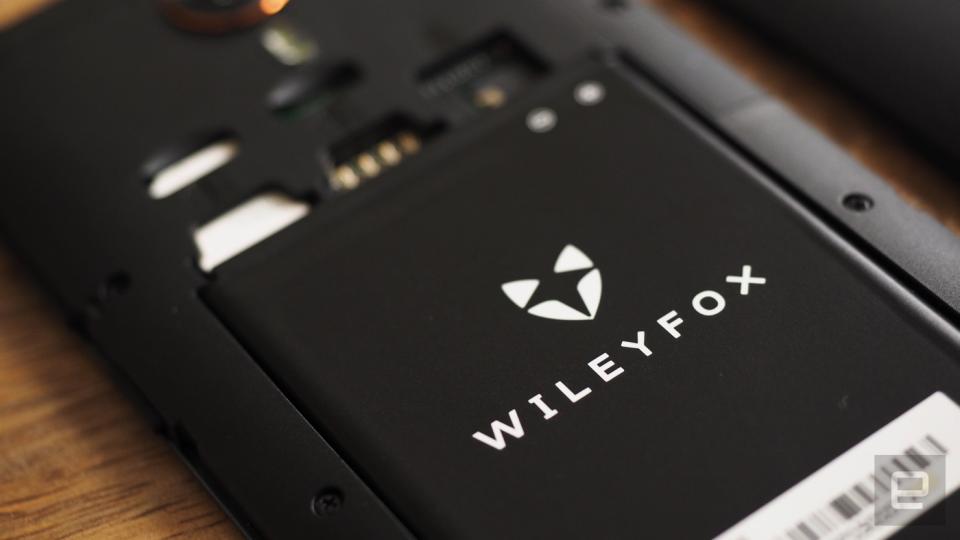
These times aren't astronomically out of the ordinary, though. Sony's Xperia Z5 managed to hold out only 40 minutes longer than the Storm, despite having 2,900mAh of juice to work with. Then again, HTC's similarly specced One A9 lasted eight and three-quarter hours despite its relatively small 2,150mAh battery. The Swift isn't exactly breaking records either, mind. This year's Moto G, which also has a 720p display and Snapdragon 410 chip, kept trucking for over two-and-a-half hours longer than the Swift with 2,470mAh in the bank.
The Storm is the kind of device you're going to want to charge every evening. It can handle a day of light-to-moderate, non-intensive usage -- I'm talking checking train times, reading emails, sending a WhatsApp message or two, thumbing through Twitter occasionally and making a couple of calls -- before that battery indicator hits the terrifying red zone. It's simply not going to live for long tomorrow if you don't refill it in today. A day with the Swift spins a similar tale. As the rundown test suggests, it does have a few more hours to give than the Storm. However, even with extremely light usage, you're not getting through more than 18 hours on a charge.
The competition

When you're talking affordable smartphones, it's impossible not to look straight in Motorola's direction. The Moto G, now in its third generation, still sets something of a benchmark for value for money. The £189, 16GB storage/2GB RAM model mirrors the spec sheet of the Swift almost identically. Wileyfox's handset, however, undercuts it in price by £60, which is a significant saving. The Moto G has a stylish, customisable design, waterproofing, better battery life and brand legacy in its favour, but the Swift does measure up as a legitimate, more affordable alternative.
If you're willing to break the £200 barrier, then the Moto X Play is also worth a look. The £219 configuration has 16 gigs of storage and 2GB of RAM, compared with the £199 Storm's 32 gig capacity and 3GB of RAM. Otherwise, the spec sheets trade blow for blow. The Moto X Play, however, has a huge 3,630mAh battery that'll easily keep you going for two full days. It's also full customisable through Moto Maker, and is no slouch in the camera department, which can't be said about the Storm.

Of course, Motorola isn't the only company with devices in this kind of price range. Huawei's P8 Lite is an attractive handset with specs comparable to that of the Swift, and can be bought for £144 on Amazon currently. Then there's the Honor 6, which boasts a lightweight frame, big battery and £210 price tag, though it does fall short of the Storm in some areas, at least on paper. If it's raw power you're after, the £199 OnePlus X is packing a quad-core 2.3GHz Snapdragon 801 processor, but there's not a great deal else to write home about otherwise.
Carphone Warehouse will sell you Sony's Xperia M4 Aqua for £150 unlocked right now, which is nothing short of a bargain. It's thin, light and waterproof, with a 5-inch 720p display, octa-core Snapdragon 615 processor (like the Storm) and a 13-megapixel camera. In short, you get a lot of hardware for your money. Contract-free phones are all about not tying yourself to a carrier, but I can't help but give Vodafone's Smart Ultra 6 an honourable mention. Available for £115 on pay-as-you-go, you're looking at a 5.5-inch, 1080p display, Snapdragon 615 CPU, 13- and 5-megapixel cameras, 16 gigs of storage and a 3,000mAh battery. It might not be the most stylish phone, but it's incredible value nonetheless.
Wrap-up

If Wileyfox's first two smartphones were evening meals, the Swift would be a tasty burger from a fast-food joint, and the Storm a sit-down dinner that leaves a bitter taste in the mouth. Neither handset is so exciting that I'm spraying food 'cause I can't wait to tell you about them, but the Swift offers great value for money. Between its neat and charming design, satisfactory display and more than adequate performance, I'm not left dwelling on the compromises and shortcomings. Instead, I'm nodding cheerfully at the £129 price tag, and thinking that the next time someone asks me to recommend a decent, cheap smartphone, I have more to say than just "go buy a Moto G."
My opinion of the Storm, on the other hand, has been pretty much defined by my experience with its camera. That 20.7-megapixel Sony sensor looks so alluring on the spec sheet of a £199 smartphone, and yet I'd choose the Swift's 13-megapixel camera as my preferred companion every day of the week. For me, it comes down to unfulfilled potential. The Storm is an extremely stylish handset. It's well-built and is arguably as attractive as any flagship crafted from more premium materials. The 1080p display isn't the best around but it's good enough, and I've no issues to raise regarding performance. But then I think back to the camera, and the one-day battery life, and even though £199 isn't asking much, I'd still say save yourself £70 and pick up a Swift instead.




































































































































































